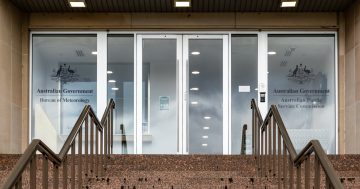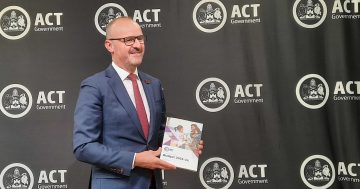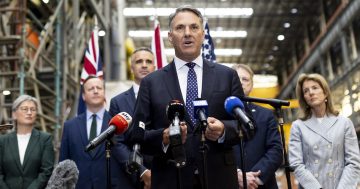
Hundreds of public servants will lose their jobs under cuts imposed in the 2017-18 Federal Budget announced last night, including 1188 (some 4 per cent of the workforce) from the Department of Human Services.
The Department of Health is set to lose 5.3 per cent of its staff, or 244 positions, with 408 staff will go from the Australian Bureau of Statistics, too.
The big winner is the Department of Defence, up 1,346 positions, though consultants face the axe as a result. The Government will save $304.1 million over four years from 2017-18 by cutting the numbers of consultants and contractors used in Defence, as well as limiting the costs of non-operational overseas and business travel.
Speaking of overseas travel, allowances for all Australian Government staff posted overseas will be standardised to find savings of $37 million over four years and ensure that payments better align with community expectations.
The Government plans to reduce its existing 2.5 per cent efficiency dividend to 2 per cent in 2018-19 and 1.5 per cent in 2019-20 in acknowledgement that the leaner the public service becomes, the less scope there is to seek efficiencies.
Of the cultural institutions, the National Archives of Australia has been hit hardest this year, losing 15 positions.
The Australian War Memorial will lose three staff under the efficiency dividend, but receives $5 million towards the development of a business case for additional exhibition space in which it can tell more stories of recent conflicts and display a comprehensive collection of wartime objects.
Otherwise, Canberra’s cultural institutions fare better this year, with the National Museum of Australia receiving funding for an additional three staff and the teams operating the National Gallery of Australia, National Library of Australia, National Portrait Gallery, National Film and Sound Archive remaining intact.
There are no cuts planned to High Court staffing levels.
The Government will push ahead with its Decentralisation Program, prioritising the shifting of non-policy Commonwealth entities to regional areas in a bid to promote job creation and economic diversification.
The Government says the program will broaden the diversity of public sector personnel to better reflect the distribution and make-up of Australia’s population.
It anticipates completing business cases for organisations being considered for relocation by December this year, and argues that moving some organisations away from Canberra will allow for greater connections with key stakeholders in the regions.
Decentralisation decisions will be based on criteria that will include:
- The supply of skills or policy connection between the potential host regions and the operations of the organisations in question;
- Telecommunications capability, services and infrastructure; and
- Specialist staff retention and associated impacts on performance.
The Government will also implement reforms that it says will use innovative technology and collaborative approaches to deliver services more cost-effectively. This will be paid for via a Modernisation Fund set up using savings from previous efficiency dividends.
The Government will invest $350 million over three years from 2017-18 in a bid to advance the collection and use of government data in the development of evidence-based policy, including people-centred policy design.
The Digital Transformation Agency’s development of whole-of-government platforms is designed to improve digital capability, and enable greater collaboration across the APS.
Funding will also be provided to accelerate the consolidation of shared corporate services arrangements and the modernisation of the administration of business and community grants. This will result in an additional 60 agencies consolidating their human resource systems into one of six corporate service hubs. In addition, around 74 per cent of existing grant programs will be delivered via the Community and Business Grants Hubs on behalf of nine agencies.
The Government will invest $129.6 million over three years from 2017-18 in a number of agencies to support their transition to more modern and sustainable operating models.
This funding will be used to upgrade systems and protect assets within organisations including the National Maritime Museum, the National Film and Sound Archive and the Museum of Australia Democracy.
The Government expects to deliver savings of nearly $300 million over the next decade by requiring agencies to fill unused office space under a program called Operation Tetris.
It says coordinated approach to surplus legacy leases has already led to more than 60,000 square metres of previously vacant leased office space in and around Canberra, and a further 7,000 square metres in other capital cities, has been filled.
WINNERS AND LOSERS
- Agriculture and Water Resources: -100
- AGD: -100
- AFP: -151
- ABC: -49
- Defence: +1346 (including +620 civilian, 472 military, 300 reserves)
- Dept of Veterans Affairs: -43
- Dept of Education and Training: -49
- AIATSIS: -31
- Employment: +72
- Environment and Energy: +25
- Bureau of Meteorology: -37
- Finance: -61
- AEC: -24
- DFAT: +80
- Health: -244
- Immigration and Border Protection: -245
- Industry, Innovation and Science: -40
- CSIRO: +68
- Digital Transformation Agency: +96
- DHS: -1188
- DSS: -42
- NDIS: +611
- ABS: -408
- ATO: +142
2017-18 Federal Budget coverage:
- Revenue is a focus of this year’s Federal Budget.
- Good news for small business but Canberra vetoed for infrastructure spend.
Catchup on our LIVE coverage from Hotel Realm: Andrew Sykes from RSM Australia dissecting “The Rocky Horror Budget”. It was just a jump to the left for Malcolm Turnbull, but still a step to the right with continued attacks on public service pay growth and decentralisation. The impacts of the Budget for Canberra are in the detail – not the headlines.
Federal Budget 2017-18 – RSM overview.
Federal Budget 2017-18 – RSM pdf presentation.




















